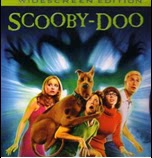Halloween, one of the world's oldest holidays, is still celebrated today in a number of countries around the globe. In Mexico and other Latin American countries, Día de los Muertos—the Day of the Dead—honors deceased loved ones and ancestors. In countries such as Ireland, Canada and the United States, adults and children alike revel in the popular Halloween holiday, which derived from ancient festivals and religious rituals. Traditions include costume parties, trick-or-treating, pranks and games.
Dia de los Muertos
In Mexico, Latin America and Spain, All Souls' Day, which takes place on November 2, is commemorated with a three-day celebration that begins on the evening of October 31. The celebration is designed to honor the dead who, it is believed, return to their earthly homes on Halloween. Many families construct an altar to the dead in their homes to honor deceased relatives and decorate it with candy, flowers, photographs, samples of the deceased's favorite foods and drinks, and fresh water. Often, a wash basin and towel are left out so that the spirit can wash before indulging in the feast.
Candles and incense are burned to help the deceased find the way home. Relatives also tidy the gravesites of their departed family members. This can include snipping weeds, making repairs, and painting. The grave is then decorated with flowers, wreaths, or paper streamers. On November 2, relatives gather at the gravesite to picnic and reminisce. Some gatherings even include tequila and a mariachi band.
Guy Fawkes Day
On the evening of November 5, bonfires are lit throughout England. Effigies are burned and fireworks are set off. Although it falls around the same time and has some similar traditions, this celebration has little to do with Halloween or the ancient Celtic festival of Samhain. The English, for the most part, stopped celebrating Halloween as Martin Luther's Protestant Reformation began to spread. As followers of the new religion did not believe in saints, they had no reason to celebrate the eve of All Saints' Day. However, a new autumn ritual did emerge. Guy Fawkes Day festivities were designed to commemorate the execution of a notorious English traitor, Guy Fawkes.
On November 5, 1606, Fawkes was executed after being convicted of attempting to blow up England's parliament building. Fawkes was a member of a Catholic group who wanted to remove the Protestant King James from power. The original Guy Fawkes Day was celebrated right after his execution. The first bonfires, which were called "bone fires," were set up to burn effigies and symbolic "bones" of the Catholic pope. It was not until two centuries later that effigies of the pope were replaced with those of Guy Fawkes. In addition to making effigies to be burned in the fires, children in some parts of England also walk the streets carrying an effigy or "guy" and ask for "a penny for the guy," although they keep the money for themselves. This is as close to the American practice of "trick-or-treating" as can be found in England today. Guy Fawkes Day was even celebrated by the pilgrims at the first settlement at Plymouth. However, as the young nation began to develop its own history, Guy Fawkes was celebrated less frequently and eventually died out.
Halloween: Where It All Began
In Ireland, where Halloween originated, the day is still celebrated much as it is in the United States. In rural areas, bonfires are lit as they were in the days of the Celts, and all over the country, children get dressed up in costumes and spend the evening "trick-or-treating" in their neighborhoods. After trick-or-treating, most people attend parties with neighbors and friends. At the parties, many games are played, including "snap-apple," a game in which an apple on a string is tied to a doorframe or tree and players attempt to bite the hanging apple. In addition to bobbing for apples, parents often arrange treasure hunts, with candy or pastries as the "treasure." The Irish also play a card game where cards are laid face down on a table with candy or coins underneath them. When a child chooses a card, he receives whatever prize is found below it.
A traditional food eaten on Halloween is barnbrack, a kind of fruitcake that can be bought in stores or baked at home. A muslin-wrapped treat is baked inside the cake that, it is said, can foretell the eater's future. If a ring is found, it means that the person will soon be wed; a piece of straw means that a prosperous year is on its way. Children are also known to play tricks on their neighbors, such as "knock-a-dolly," a prank in which children knock on the doors of their neighbors, but run away before the door is opened.
































